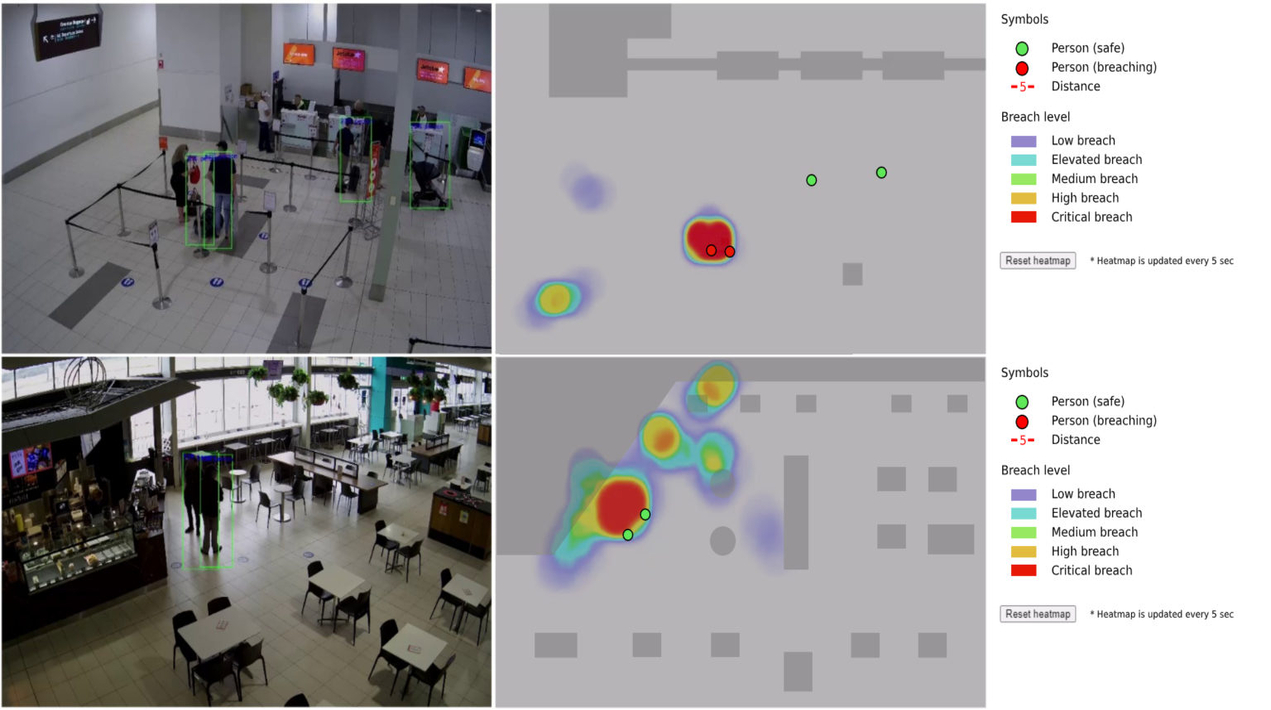
Griffith University researchers have developed an AI video surveillance system to detect social distancing breaches in an airport without compromising privacy. By keeping image processing gated to a local network of cameras, the team bypassed the traditional need to store sensitive data on a central system.
Professor Dian Tjondronegoro from Griffith Business School says data privacy is one of the biggest concerns with this technology because the system has to constantly observe people’s activities to be effective.
With the team’s system, the central machine only needs to periodically call on local nodes to send updates they’ve made to their decision-making models without needing to see the images they’ve captured. These adjustments are added to the central decision-making model to improve accuracy.
Published in Information, Technology & People, the case study was completed at Gold Coast Airport which, pre-COVID-19 had 6.5 million passengers annually with 17,000 passengers on-site daily. Hundreds of cameras cover 290,000 square metres with hundreds of shops and more than 40 check-in points.
Researchers tested several cutting-edge algorithms, lightweight enough for local computation, across nine cameras in three related case studies testing automatic people detection, automatic crowd counting and social distance breach detection to find the best balance of performance without sacrificing accuracy and reliability.
The team’s goal was to create a system capable of real-time analysis with the ability to detect and automatically notify airport staff of social distancing breaches.
Three cameras were used for the automatic social distance breach detection testing covering the check-in area, food court and waiting area. Two people were employed to compare live video feeds and the AI analysis results to determine if people marked as red were in breach.
The AI system performed in real-time giving accurate and reliable results. It can also generate heat maps to show cumulative breaches highlighting spaces that may need to be re-designed for public safety. Researchers found camera angles affect the ability of AI to detect and track people’s movements in a public area and recommend angling cameras between 45 to 60 degrees.
The team’s AI-enabled system design was flexible enough to allow humans to double-check results reducing data bias and improving transparency in how the system works. The system can scale up in the future by adding new cameras and be adjusted for other purposes. The study shows responsible AI design can and should be useful for future developments of this application of technology.
A similar solution is being developed and implemented in the United Kingdom. One report notes that an artificial intelligence (AI) firm has adapted its data pipelines and object detection technology for COVID-19.
An autonomous vehicle tech manufacturer is using its expertise in AI to develop a tool the public can use to see how busy public places are at any time. This will help people observe social distancing as we emerge from the pandemic. The project has been funded by Innovate UK.
The tool uses information from Transport for London’s (TfL’s) JamCams, which monitor the city’s road networks. JamCam data is publicly accessible under TfL’s open data policy. The team collects the data, video and imagery from TfL’s JamCams to help autonomous vehicle developers test how safe their cars are.
They realised they could also adapt this tool for COVID-19. Rush hours and normal routines have changed during the pandemic. The company’s AI tool can be used by the public to check how busy areas are, from Oxford Street and the West End to suburban streets in south London.
The team has collected data since the beginning of COVID-19, providing insight into mobility trends and changes in behaviour across London during the crisis. The solution is likely to be implemented in other towns and cities across the UK.
















